 12 min
12 min 2.1K
2.1KThe Best Money Wire Transfer Services for Fast and Secure Transactions
Discover top money wire transfer services that ensure fast and secure transactions. Find the best options to meet your needs in our comprehensive guide.
Last month, I watched my crypto portfolio swing wildly as Bitcoin danced around $40K. But here's the thing – while I was obsessing over DeFi yields and staking rewards, my mom called asking how to send money to my cousin in Ghana for a family emergency. Suddenly, I realized I'd been so deep in the crypto rabbit hole that I'd forgotten about the traditional money transfer services that still move billions daily.
It hit me then: not everyone's ready to navigate blockchain bridges and gas fees. Sometimes you just need to send money – fast, secure, and without the drama of explaining private keys to your relatives.
That's when I dove headfirst into researching the best ways to wire money in 2025. What I found surprised me (and probably saved me from a few family arguments about "that crypto nonsense").
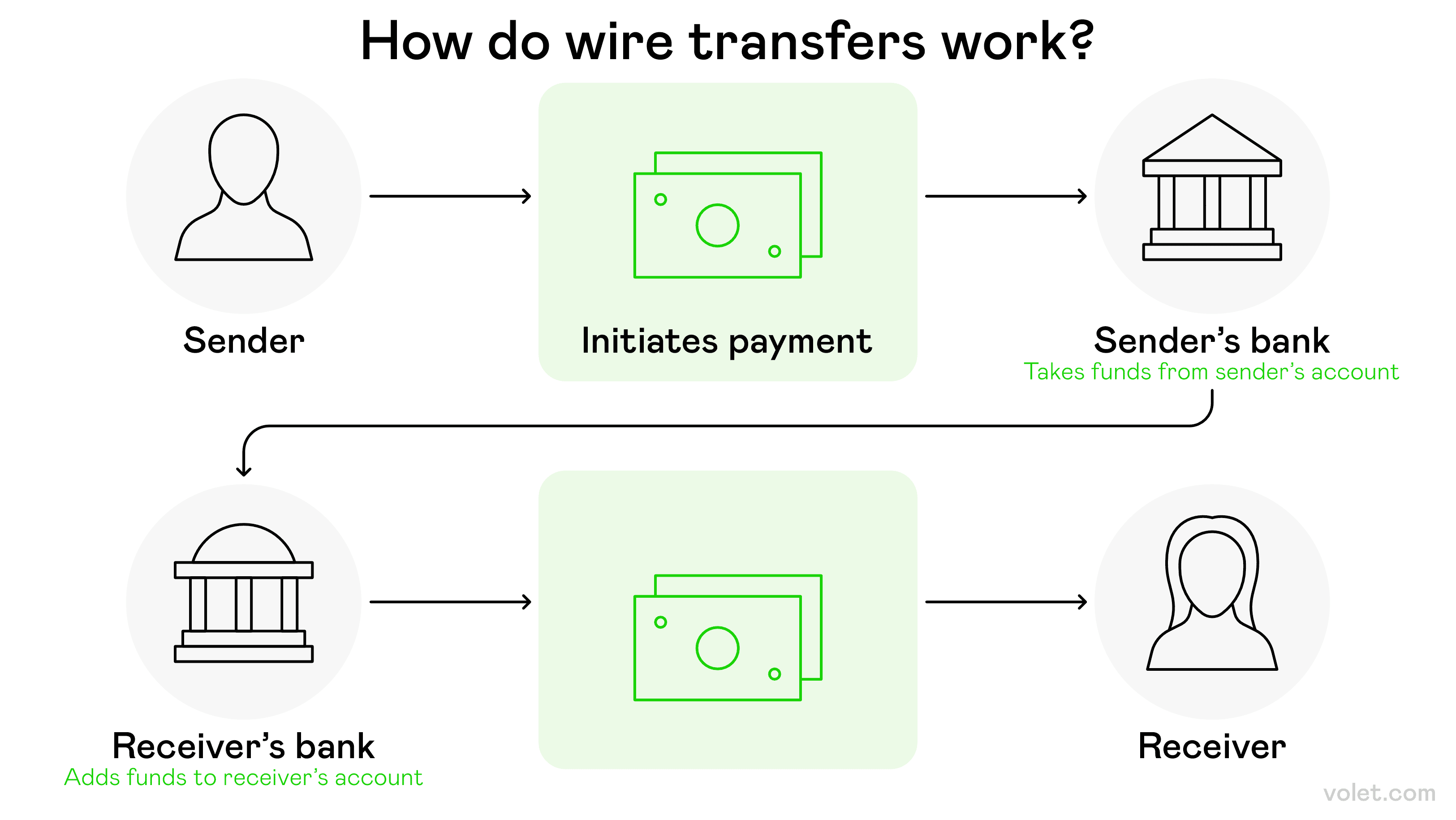
The step-by-step process of a wire transfer from sender to receiver.
Understanding Wire Transfers: The Basics You Need to Know
Here's what I learned during my crash course in traditional finance: a wire transfer is basically the old-school version of sending digital assets through banks instead of blockchains.
Think of it this way – when you send money using Bitcoin, you're broadcasting a transaction to the network. When you send wire transfers, you're asking your bank to send an electronic message to another bank saying "Move this money from account A to account B."
The process works through two main networks:
- SWIFT (for international wire transfers) – like the global highway system for banks
- Fedwire (for domestic US wire transfers) – the express lane within America
Banks have to confirm the identity of their customers when they open a bank account for wire transfers (thanks, to anti-money laundering laws). This means more paperwork than opening a crypto wallet, but also more consumer protection through member FDIC insurance.
Wire transfers can be either domestic or international transfers, and here's where it gets interesting – the fees and processing times vary wildly depending on which route your money takes.
How Bank Account Wire Transfers Actually Work
I'll be honest – I had to ask my banker friend to explain this because it's way more complex than I initially thought.
When you send money via wire transfer, you're not just moving money from your bank account to someone else's. Sometimes your money goes through what's called an intermediary bank (especially for international wire transfers). It's like having a layover when flying – your money stops at another bank before reaching its final destination.
Wire transfers usually require you to provide account information before sending:
- Recipient's full name and address
- Their bank account number
- The receiving bank's routing number (domestic) or SWIFT code (international wire)
- Sometimes additional details like the bank's address
The whole process typically takes:
- Domestic transfers: Same business day if sent before cutoff times
- International wire transfers: 2-5 business days (sometimes longer depending on the destination country and time zones)

Top 10 online money transfer service providers, showcasing trusted platforms known for secure, fast, and convenient international wire transfers.
Best Money Wire Transfer Services: My Personal Testing
After spending weeks comparing options (and testing several with small amounts), here are the services that actually deliver on their promises:
Traditional Banks: The Safe (But Expensive) Route
Wells Fargo and other major banks offer wire transfer services, but they're not exactly wallet-friendly. I paid $25 for a domestic wire transfer and $45 for an international wire. The exact fee structure can be surprising if you don't carefully compare options beforehand.
- Your money is insured (member FDIC protection)
- Branch support if things go wrong
- Established reputation and reliability
- Funds availability is guaranteed through deposit products
- Higher fees than most alternatives
- Strict business day processing
- Often poor foreign exchange rates
- Wire transfer fees can add up quickly
JPMorgan Chase Bank offers similar services with comparable fees. The advantage? If you're already banking with them, the process is streamlined through their online banking platform, and you can even pay bills through the same interface.
Online Money Transfer Services: The Sweet Spot
This is where things get interesting. Online transfer platforms have revolutionized how we send money abroad – and they're way cheaper than traditional banks.
Wise (formerly TransferWise) became my go-to after testing it multiple times. Money transfer international transfers can be cheaper with Wise than traditional banks, sometimes by 70% or more.
Here's what impressed me:
- Real-time exchange rates (no sneaky markups)
- Transparent transfer fee structure
- Fast processing times
- Great mobile app experience for your first online transfer
Remitly surprised me with its user-friendly interface and competitive rates for specific corridors (especially to developing countries). Their currency exchange rates often beat traditional banks.
Western Union: The Global Giant
Western Union operates in over 200 countries and territories – that's practically everywhere. I've used their services in three different countries, and it just works.
Some impressive stats that caught my attention:
- Western Union has 600,000 agent locations worldwide
- They've been providing reliable services since 1851 (talk about staying power)
- Western Union offers both online transfer and in-store money transfer options
You can send money easily with the Western Union app or website, but their fees can be steep depending on how you pay. Using a debit card costs more than bank account transfers, but it's faster.
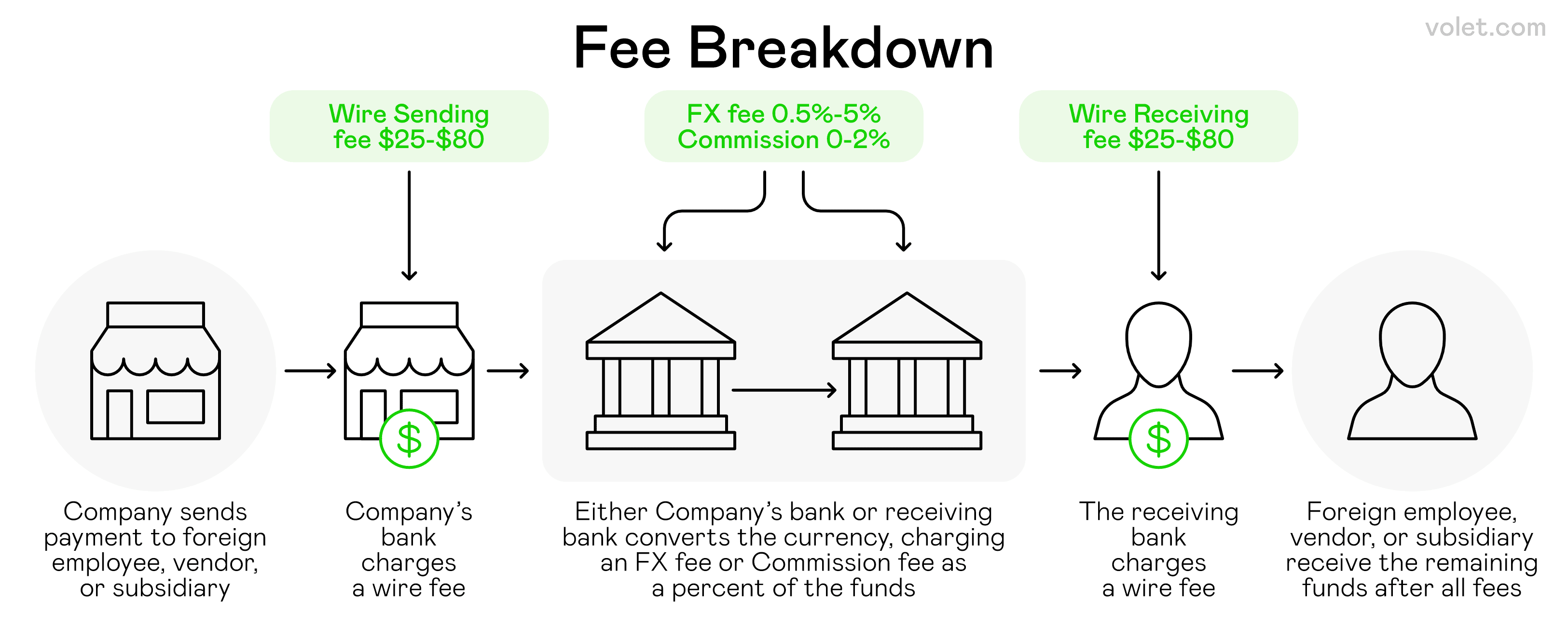
Outline of the fees involved in sending international wire transfers, including sending, conversion, and receiving bank charges.
Understanding Transfer Fees and Exchange Rates
This is where most people get burned (myself included, initially). There are usually two costs when you send money:
- The transfer fee – what you pay upfront
- The exchange rate markup – the hidden cost in currency exchange
Both transfer fees and exchange rate margins vary significantly between providers. Some services advertise "zero fees" but make their money on unfavorable foreign exchange rates. Others charge upfront but offer better currency exchange rates.
Pro tip: Always check the exact fee structure before sending. Fees vary based on:
- How much you're sending
- Payment method (debit card vs. bank account)
- Delivery speed
- Destination Country
App-Based Solutions: Send Money from Your Phone
The rise of mobile apps has made sending money ridiculously easy. Here's what I've tested:
Zelle is fantastic for domestic transfers if both you and the recipient have participating banks. Funds transferred using Zelle are typically available in minutes if the recipient is already enrolled. You can use either your mobile number or email to send money through your mobile phone. The catch? It's limited to domestic transfers and participating banks only.
PayPal works internationally and most customers already have accounts. You can link your debit card or bank account, though debit card transactions carry higher fees. You can even tap pay for quick transactions.
Cash App, Venmo, and similar peer-to-peer payment apps allow for almost instant transfers between users, but they're primarily domestic-focused.
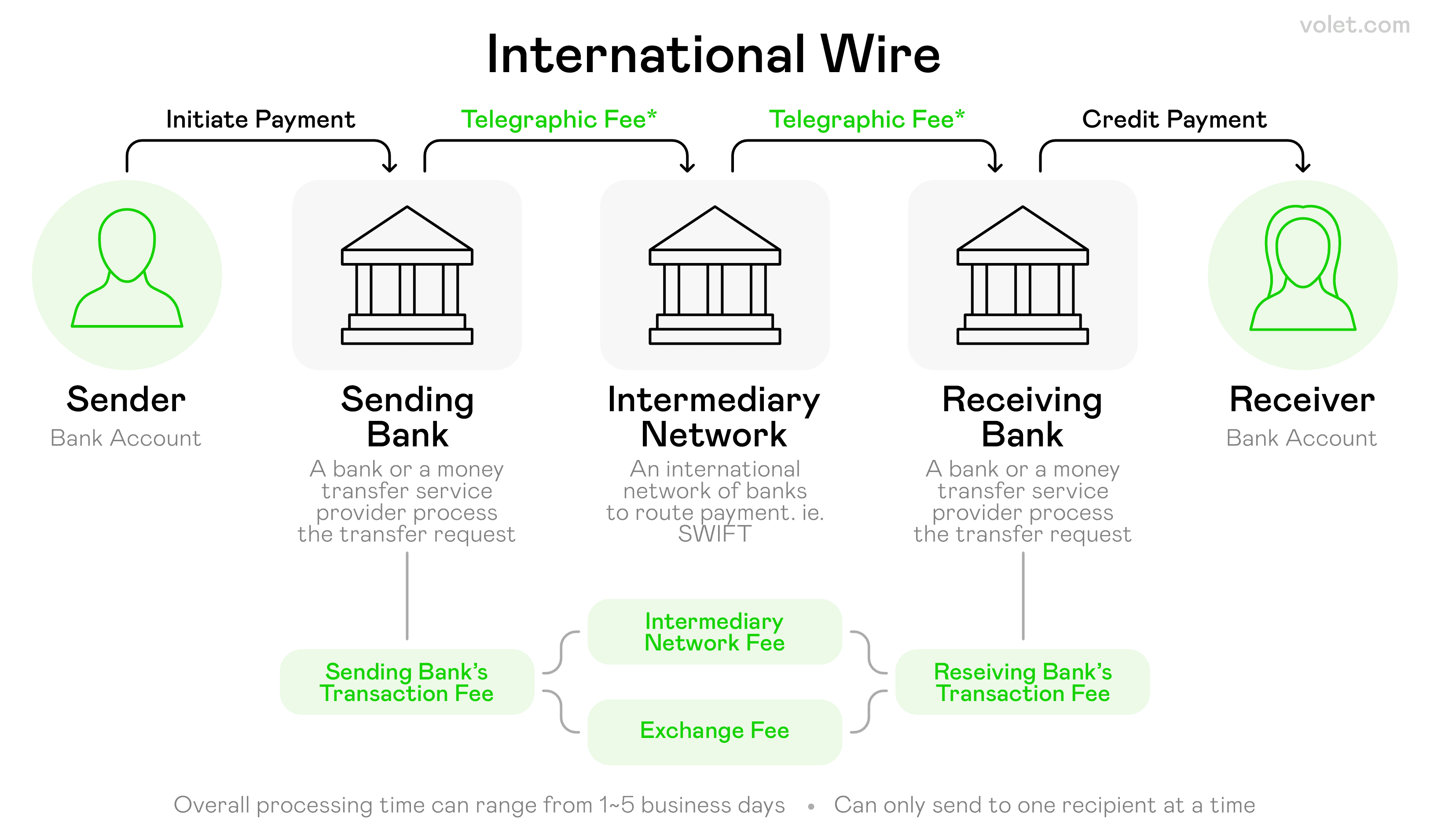
Illustration of a wire transfer process, showing the movement of funds from the sender’s bank through intermediary steps to the recipient’s bank account.
International Wire Transfers: What You Need to Know
International transfers are where things get tricky. Your money might pass through multiple banks, each potentially charging fees or applying its own exchange rates.
International wire transfers can take a few working days due to processing through multiple banks. During my research, I learned that some transfers to certain countries take longer due to additional compliance checks.
Such factors affecting international wire transfer speed:
- Destination country regulations
- Time zone differences
- Whether it's a business day in both countries
- Banking relationships between institutions
MoneyGram deserves a mention here – they allow payments directly from bank accounts into the accounts of recipients in many countries. Their network isn't as extensive as Western Union's, but they often have better rates for specific routes.
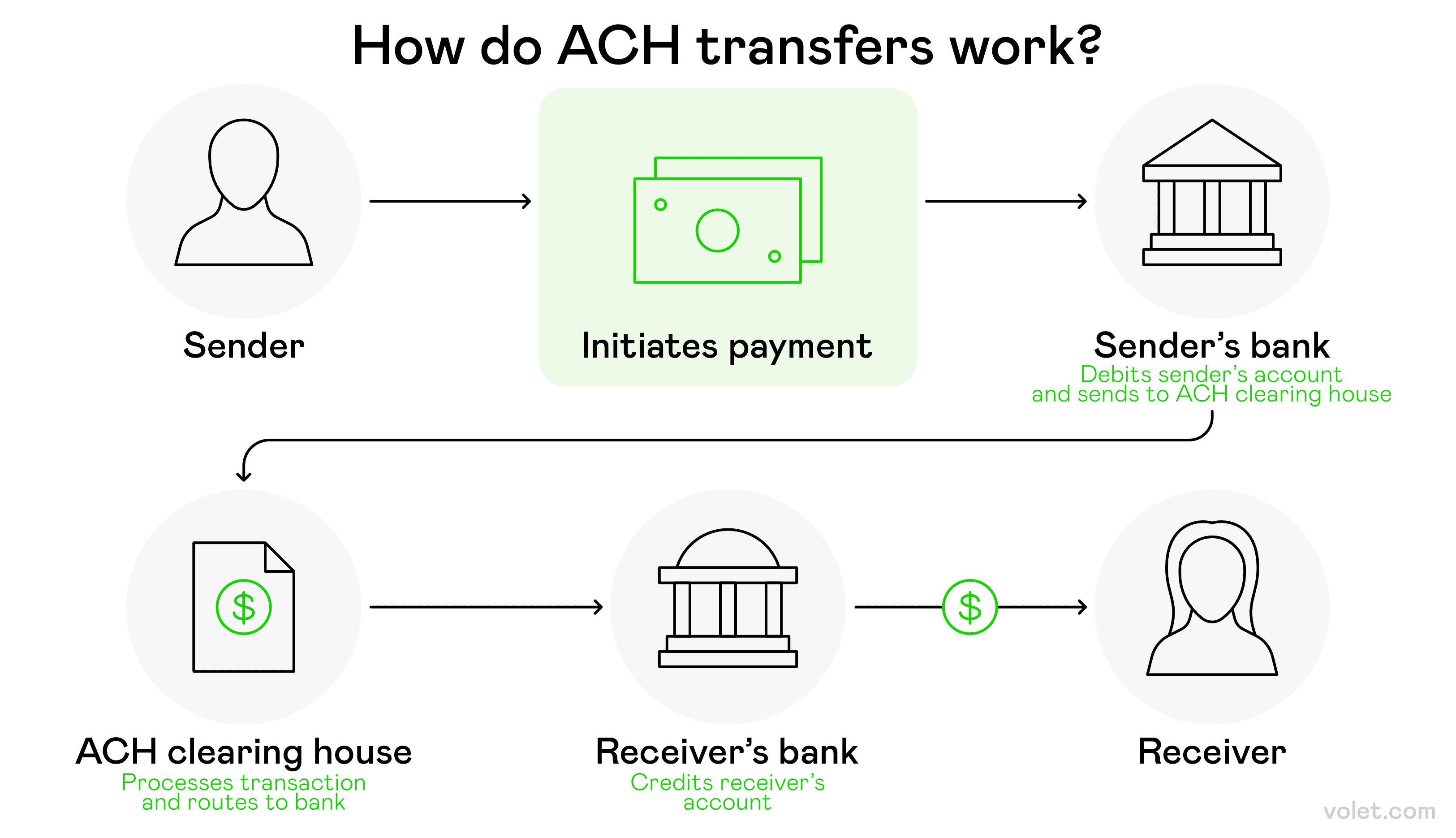
How ACH transfers move funds from sender to receiver through banks and the ACH network.
Comparing Costs: ACH vs Wire Transfers
Here's something that surprised me: ACH payments may have lower fees than wire transfers, and sometimes are free. The trade-off? ACH transfers often take longer than wire transfers to clear before being accessible by the recipient.
For domestic transfers under $1,000, I usually recommend ACH over wire transfers unless speed is critical. For larger amounts or international transfers, wire transfer services often make more sense despite higher costs.
Mobile Banking and Online Transfer Options
Most banks now offer wire transfer services through their online banking platforms. I've tested several, and while convenient, they're often more expensive than dedicated money transfer services.
What to look for in online banking wire transfer services:
- Clear fee disclosure upfront
- Real-time transfer tracking
- Mobile phone-friendly interface
- Customer support availability
The newer fintech banks often offer better deals on international transfers compared to traditional banks, but always verify funds availability policies before relying on them for urgent transfers.
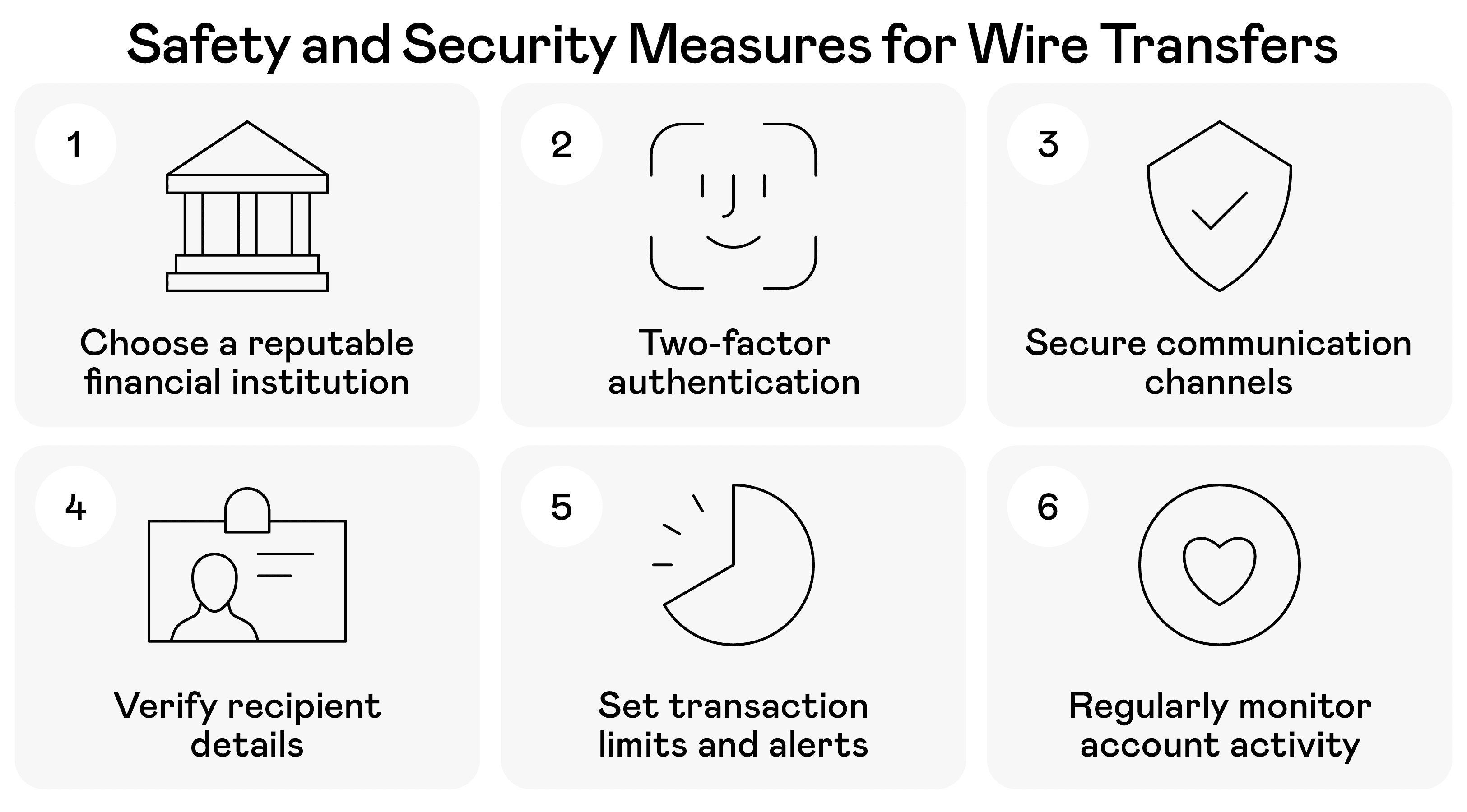
Six important safety and security tips that individuals or businesses should follow when conducting wire transfers.
Security and Safety Considerations
Despite their safety features, fraudulent activities can still occur with wire transfers. Unlike crypto transactions (which are irreversible by design), wire transfers can sometimes be recalled – but only if caught quickly.
Red flags to watch for:
- Requests to send money to strangers
- Pressure to send money urgently
- Deals that seem too good to be true
- Recipients who can't provide proper identification
Always verify recipient details independently, especially for large amounts. I learned this the hard way when I almost sent money to a scammer impersonating a family member.
Hidden Costs and Market Conditions
Here's where my crypto background helped me understand traditional finance better. Just like how gas fees spike during network congestion, wire transfer costs can vary based on market conditions.
Variables affecting costs:
- Foreign currency volatility
- Banking hours and business days
- Associated interest charges (rare but possible)
- Data rates for mobile app usage
Always read the fine print. Some services advertise low fees but hit you with poor exchange rates. Others offer great rates but charge higher fees upfront.
Processing Times and Business Day Restrictions
Unlike crypto (which works 24/7), traditional banking operates on business day schedules. Domestic wire transfers are typically completed on the same day they are arranged – but only if sent before the bank's cutoff time.
Typical cutoff times:
- Most banks: 2-3 PM local time
- Some online transfer services: As late as 5 PM
- International transfers: Often earlier (around noon)
Weekend and holiday delays can be frustrating, especially for urgent transfers. This is where crypto's always-on nature shines.
Special Situations: Savings Accounts and Restrictions
Some banks limit wire transfers from savings accounts due to federal regulations. If you frequently send money in large amounts, maintaining funds in a checking account might be more convenient.
Restrictions that may apply:
- Daily/monthly sending limits
- Minimum and maximum amounts
- Geographic restrictions for certain countries
- Eligibility requirements for new accounts
The New York State Department of Financial Services and similar regulatory bodies in other states have specific requirements for money transmitter licenses, which affects which services are available where you live. These regulations are enforced at the sole discretion of regulatory authorities.
Choosing the Right Service for Your Needs
After all my testing and research, here's how I decide which service to use:
- For domestic transfers under $500: Zelle or similar peer-to-peer apps
- For domestic transfers over $500: Wire transfer through my bank or Wise
- For international transfers: Wise or Western Union, depending on the destination country
- For emergency situations: Western Union's cash pickup service
- For regular international payments: Wise or similar online transfer services
You'll want to carefully compare fees, exchange rates, and processing times for your specific situation. What works best for sending money to Europe might not be ideal for transfers to Asia or Africa.
Tips for First-Time Wire Transfer Users
Your first online transfer experience should be smooth if you prepare properly. Here's my step-by-step approach:
- Start small – test with a small amount first
- Double-check recipient information – mistakes are expensive to fix
- Keep receipts and confirmation numbers – you'll need these for tracking
- Understand the timeline – don't promise arrival dates you can't guarantee
- Have backup payment methods ready – in case your primary method fails
Closing Thoughts
Look, I'll always be a crypto enthusiast at heart. There's something beautiful about peer-to-peer transactions without intermediaries. But after diving deep into money wire transfer services, I gained a new respect for traditional finance infrastructure.
Sometimes you need the reliability of a system that's been working for decades. Sometimes your recipient can't (or won't) deal with crypto volatility. And sometimes, you just want to send money without explaining blockchain technology to your grandmother.
The best approach? Understanding all your options. Whether you’re sending $50 to a friend or $5,000 to family overseas, there’s a service for you and your budget. The key is knowing which tool to use for each situation.
Don’t put all your eggs in one basket – diversify your payment methods just like you’d diversify your investment portfolio. Keep both traditional and digital options available, because you never know when you’ll need them.
Disclaimer
This article is for informational purposes only and not legal, financial or professional advice. All content is based on publicly available information and personal opinions. Readers should seek professional guidance before making decisions or acting on the information presented. The author and publisher assume no liability for any actions taken or not taken by the reader based on the content herein.
FAQs
Domestic wire transfers usually complete the same business day if sent before the bank’s cut-off time (usually 2-3 PM). International wire transfers take 2-5 business days depending on the destination country and processing requirements.
Wire transfers are processed individually and settle faster, while ACH transfers are processed in batches and take longer. Wire transfers cost more but offer same-day processing for domestic transfers, while ACH transfers are often free or low cost but take 1-3 business days.
Wire transfers use secure banking networks but can still be targeted for fraud. Always verify recipient information independently, never send money to unknown parties, and be wary of urgent requests. Unlike some other payment methods, wire transfers can’t be reversed once completed.
Yes, most banks and many online money transfer services offer wire transfer capabilities through their websites and mobile apps. Online transfers often provide better exchange rates and lower fees than in person transactions at bank branches.
You’ll need the recipient’s full name and address, their bank account number, the receiving bank’s SWIFT code, the bank’s address and sometimes additional info depending on the destination country. Some countries require specific reference numbers or codes.












